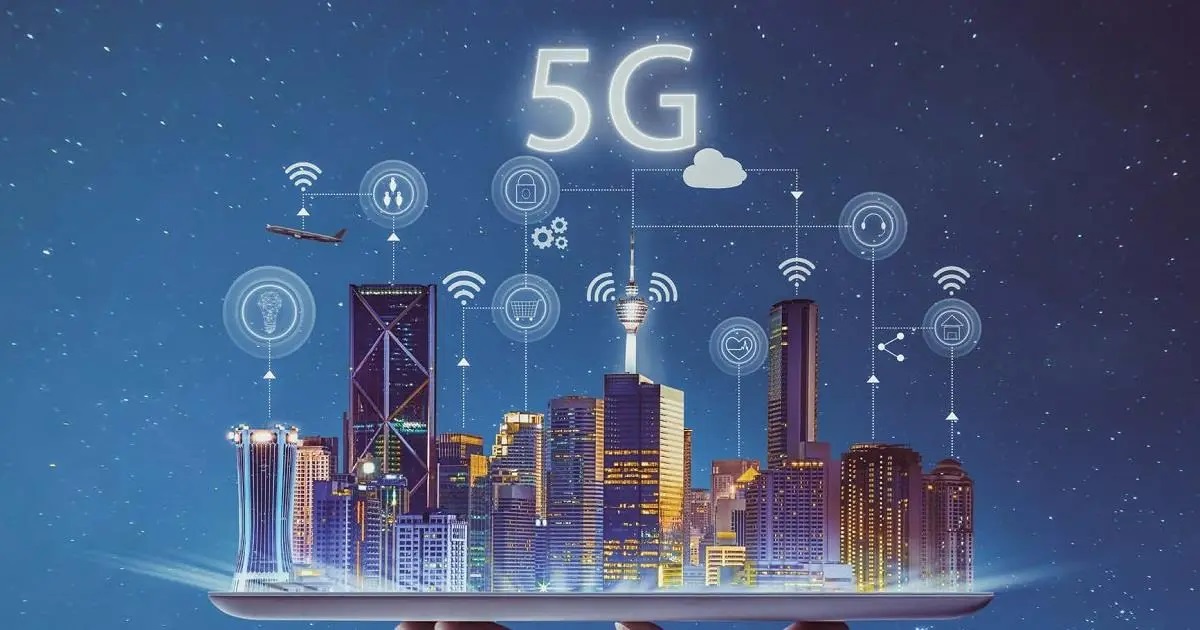Harnessing the Power of 5G Broadcast for Universal Content Accessibility
5G broadcast technology offers numerous advantages that greatly benefit broadcasters in achieving effective audience engagement

The rise of 5G technology in mobile devices has opened new opportunities for broadcasters, revolutionizing their interaction with audiences. By harnessing the capabilities of 5G broadcast, broadcasters can distribute content seamlessly across a range of devices, including smartphones, tablets, smart TVs, and other connected devices. This empowers broadcasters to cater to evolving consumer preferences, expand their audience reach, and foster deeper engagement.
An important advancement in this field is the recent submission of an application for an experimental 5G Broadcast Special Temporary Authority (STA) to the Federal Communications Commission (FCC) by WWOO-LD, a Boston-based Low-Power Television (LPTV) station. This development highlights the agility of LPTV stations in embracing evolving technologies, bridging the gap between traditional broadcasters and mobile media.
Progress in 5G Broadcast Technology:
Significant progress has been made in 5G broadcast technology since the 3rd Generation Partnership Project (3GPP) Release 14. Release 16 further improved eMBMS capabilities, while Release 17 introduced the comprehensive Media Broadcast Service (MBS) architecture.
Successful tests conducted by countries worldwide have demonstrated the readiness of 5G Broadcast for commercialization.
Advantages of 5G Broadcast Technology:
5G broadcast technology offers numerous advantages that greatly benefit broadcasters in achieving effective audience engagement. Here are the key advantages:
- Global Digital Connectivity: With the widespread adoption of 5G in mobile devices, broadcasters utilizing 5G broadcast can ensure that their content reaches a diverse range of devices. This compatibility allows broadcasters to deliver content seamlessly across multiple platforms and maximize their audience reach and engagement.
- Efficient Spectrum Utilization: 5G broadcast optimizes the usage of spectrum by delivering content to multiple users simultaneously through a single transmission. This efficient utilization of frequency resources is particularly advantageous for popular live events or situations where a large audience simultaneously accesses the same content.
- Extensive Coverage: 5G broadcast utilizing TV spectrum is well-suited for delivering content over large geographic areas, enabling broadcasters to reach broad audiences. This capability is invaluable for emergency alerts, public safety communications, and other scenarios where widespread coverage is critical.
Symbiotic Relationship between LPTV Stations and Traditional Broadcasters:
LPTV stations, by embracing 5G broadcast, bring diversity to the broadcasting landscape and offer an additional platform for content delivery, expanding options for viewers and enhancing their overall experience.
Mutual Benefits between Broadcasters and Mobile Network Operators:
Traditional broadcasters gain access to the extensive reach and ubiquity of 5G devices, allowing them to connect with audiences on the go and expand their viewer base. This expanded reach enables broadcasters to engage with viewers in new ways and explore innovative content distribution methods.
On the other hand, mobile network operators benefit from the offloading of media traffic facilitated by 5G broadcast. Broadcasting popular or bandwidth-intensive content through broadcast transmissions reduces strain on the cellular network, alleviating network congestion and improving overall network performance. This offloading of media traffic optimizes network resources and enhances the quality of service for mobile users, ensuring a smooth and seamless experience.
Coordination is Key:
Implementing a new system always presents complexities, and it is crucial to address potential challenges using a viable system of networking. Factors such as regulatory processes, infrastructure requirements, interoperability, security and privacy, and availability of high-quality content must be carefully considered.
Coordination is key to ensuring success. By aligning efforts and leveraging the strengths of each stakeholder, technological innovation can be maximized, content delivery can be optimized, and the overall viewing experience for audiences can be enhanced.
Openness Enhances Viability:
To gain a comprehensive understanding of the impact of 5G broadcast, it is essential to examine specific examples and case studies from around the world. Highlighting successful trials, implementations, and regulatory initiatives from various regions would provide a global perspective on the progress of 5G broadcast technology. This approach would also showcase its potential for transforming the broadcasting landscape on a broader scale.
People-Centered Transformation:
Successful integration of 5G broadcast technology requires organizations to upgrade their knowledge and skills while focusing on maximizing audience satisfaction. Adopting a viewer-centric approach and tailoring content offerings to audience preferences ensures universal content accessibility and positive viewer experiences.
Conclusion:
As the journey of 5G broadcast continues, the collective efforts of all stakeholders will shape the future of the broadcasting industry. By staying at the forefront of technological advancements and embracing the potential of 5G broadcast, LPTV stations, traditional broadcasters, mobile network operators, and regulatory bodies can pave the way for a transformative broadcasting experience that benefits both broadcasters and viewers alike.
Through collaboration, innovation, and a shared vision, the broadcasting landscape can evolve into a dynamic and captivating media ecosystem of connectivity, interactivity, and universal content accessibility, ultimately enhancing the viewing experience for audiences worldwide and meeting their demands anytime, anywhere, and on any device.
Get the TV Tech Newsletter
The professional video industry's #1 source for news, trends and product and tech information. Sign up below.

Ling Ling Sun is chief technology officer of Nebraska Public Media, a statewide network providing content through its TV and radio stations and other multimedia platforms. Using a viable system model as a tool, she leads technology transformation at Nebraska Public Media and has led her team in many successful projects and initiatives that enhance and expand Nebraska Public Media services. From 2013 to 2018, Sun served two terms as chair of PBS ETAC (Public Broadcasting Service Engineering Technology Advisory Committee) and as a member of the PBS Interconnection Committee. Currently, she is chair of the NAB Broadcast Engineering and Information Technology Conference Program Committee and a member of the Nebraska Information Technology Commission Technical Panel. She is a 2019 Broadcasting+Cable Technology Leadership Award honoree. Ling Ling was among the “Top 50 Women Leaders in Technology of 2022” announced by “Women We Admire.”
